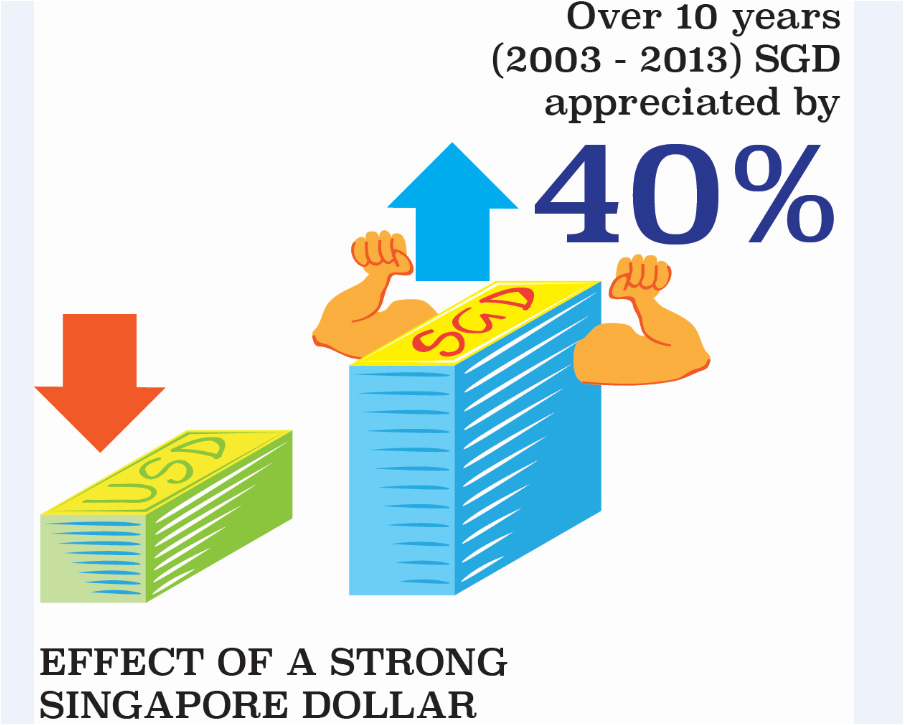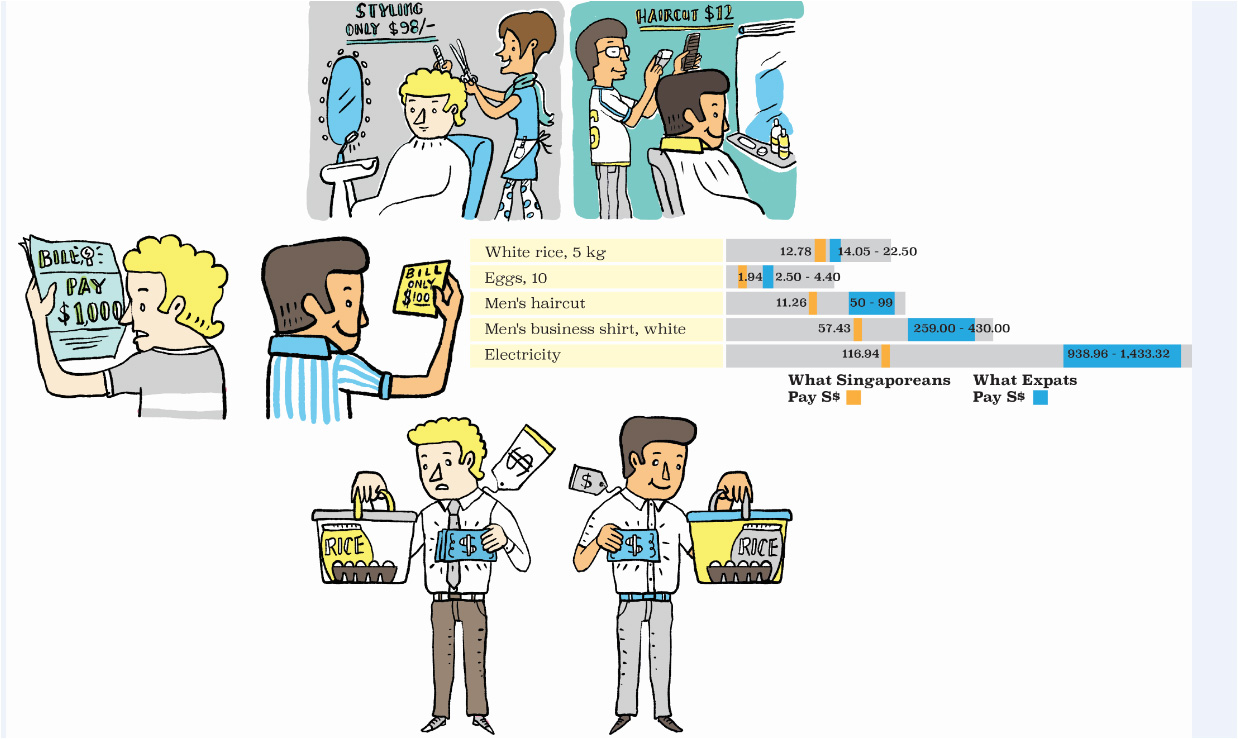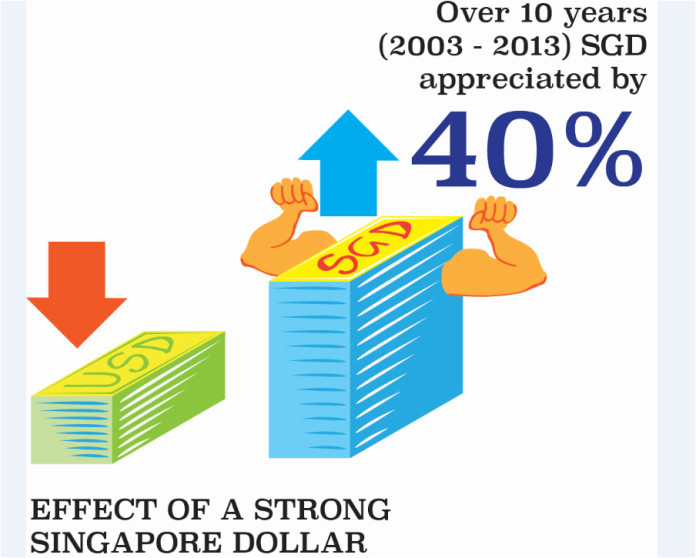In the Economist Intelligence Unit’s (EIU) Worldwide Cost of Living (WCOL) survey conducted in 2015, Singapore was ranked as the most expensive city for expatriates to live in for the third consecutive year.
The WCOL survey is designed to allow HR managers and expatriates to compare the cost of living in 133 cities globally, and to enable the HR managers to work out appropriate compensation policies when relocating employees.
The survey findings do not reflect the cost of living of Singaporean households. Here’s why:
1. All prices are converted from local currencies to US dollars1, which means that the rankings are sensitive to currency fluctuations.
From 2004 to 2014, the Singapore dollar appreciated by nearly 35 per cent against the US dollar. This significantly increased the price of goods and services expressed in US dollar terms, thus contributing to the rise in Singapore’s ranking in the EIU survey over this period.
In 2015, when the Singapore dollar depreciated by 11 per cent against the US dollar, the gap between Singapore and the next two cities in the ranking (Zurich and Hong Kong) narrowed.
While such currency fluctuations affect the rankings and cost of living of expatriates who earn their income in foreign currencies, they have less impact on Singaporeans who earn their income in the local currency.

2. The items in the EIU consumption basket are quite different from the goods and services regularly consumed by Singaporeans.
For example, the EIU’s consumption basket includes items like filet mignon and international foreign daily newspapers. Comparatively, the typical Singaporean consumption basket includes items such as local newspapers and chicken rice, which tend to be cheaper.

3. The prices of comparable items in the EIU survey are higher than what Singaporeans pay
For the comparable items in both the EIU and Singaporean consumption baskets, the prices of close to 95 per cent of them were higher in the EIU survey than in the surveys conducted by the Department of Statistics (DOS).
Indeed, for these items, about 40 per cent had prices that were more than double what Singaporeans pay. Table 1 shows the prices of some of the comparable items collected by DOS and EIU.
*Prices from the EIU WCOL survey have been scaled to match the units used by DOS.

Note
1. EIU converts all prices to US dollars because the WCOL survey is intended as an international guide to global companies.
2. DOS has comparable data for about 120 out of 170 items included in the EIU WCOL basket.
3. DOS collects the price data for more than 6,600 brands/varieties of goods and services in its monthly and yearly surveys. Prices of selected items are published in the Singstat Table Builder.
4. The price range for the monthly electricity bill in the EIU survey is based on the consumption of a spacious property serving a wealthy expatriate family of four (plus possible domestic helpers).








